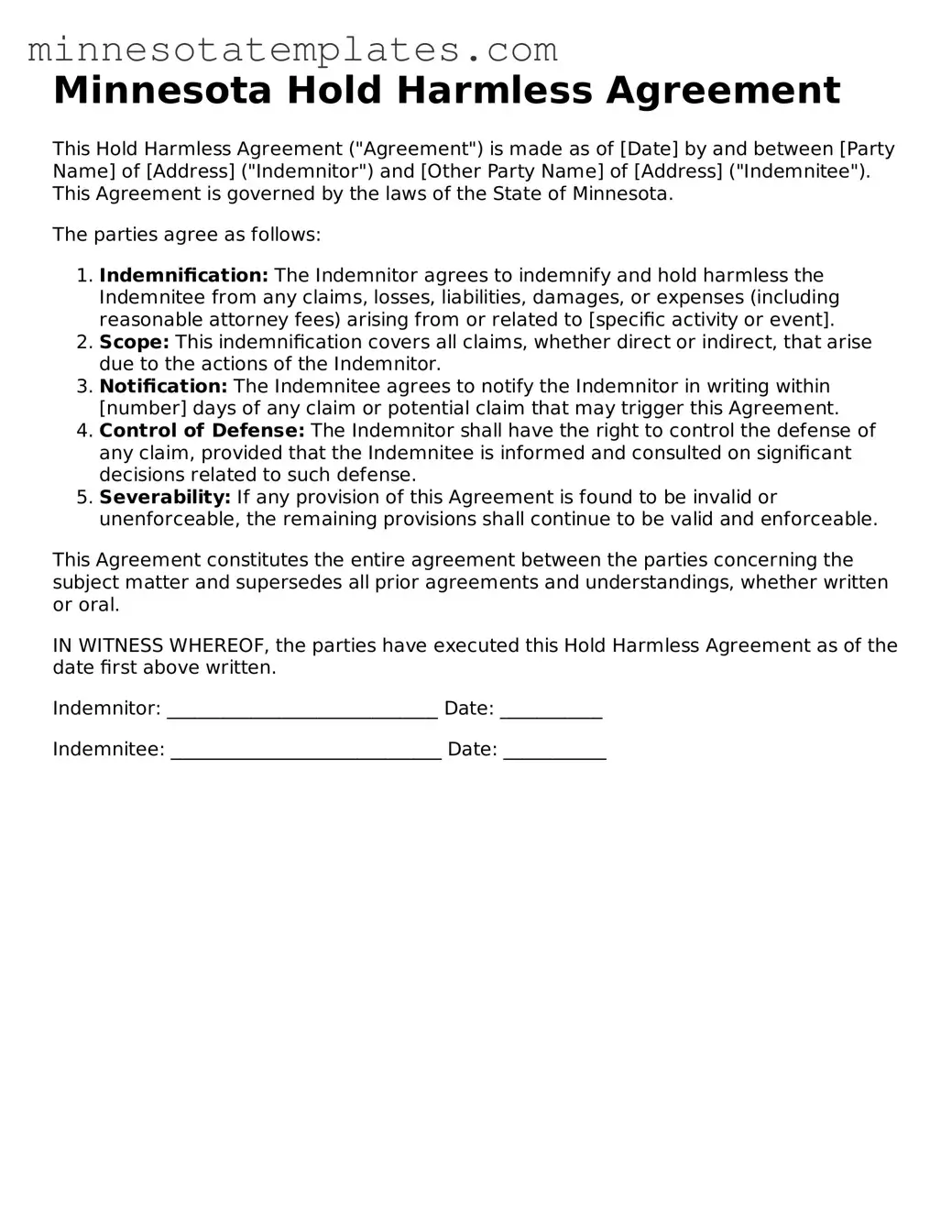Valid Hold Harmless Agreement Form for the State of Minnesota
The Minnesota Hold Harmless Agreement is a legal document designed to protect one party from liability or claims arising from the actions of another party. This form is often utilized in various contexts, such as events, property use, or service agreements, to ensure that individuals or organizations are safeguarded against potential legal repercussions. Understanding the nuances of this agreement is essential for anyone looking to navigate liability issues effectively.
To take the next step, fill out the form by clicking the button below.
Access Your Form Now
